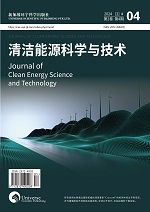Journals
-
Clean Energy Science and Technology
Clean Energy Science and Technology (CEST, eISSN: 2972-4910) is an international open access peer-reviewed journal. The journal aims to publish high-quality, authoritative, and interdisciplinary insights in the form of original research article, review, commentary and more types in a wide range of fields, including biomass, solar energy, smart energy, wind and marine energy, hydrogen, the conversion and storage of clean energy, materials, equipment and safety, system optimisation, development and application, and clean energy policy, etc.
Journal Abbreviation:
Clean Energy Sci. Technol.
-
Food Nutrition Chemistry
Food Nutrition Chemistry (FNC, eISSN: 2972-4309) is an open access peer-reviewed journal. FNC publishes various types of articles on food nutrition chemistry in the field of life and health, such as original research articles, review articles, case reports. The journal is committed to providing an academic exchange platform for researchers in the world of food nutrition chemistry and health. Researchers and practitioners from all over the world are welcome to contribute.
Journal Abbreviation:
Food Nutr. Chem.
-
清洁能源科学与技术
《清洁能源科学与技术》是一份国际开放获取的同行评审期刊,以中文和英文同步出版(两本期刊,独立ISSN)。本刊旨在以研究文章、评论文章、综述文章、案例研究等形式发表高质量的权威性和跨学科观点,领域涵盖生物质能、太阳能、风电、氢能、清洁原子能,以及清洁能源的转换储存、材料装备及安全、系统优化,开发利用和清洁能源政策等多个板块。
-
食品营养化学
《食品营养化学》是一本开放获取的国际学术期刊,由新加坡环宇科学出版社出版。期刊使用中文和英文两种语言同步出版(有中英文两本独立期刊,独立刊号)。期刊发表有关食品营养化学的所有领域的原创研究和评论文章,主要包括供能营养素、水/微量营养素、生物活性物质、膳食纤维等营养素化学组成、结构、功能性质研究,以及食品营养与健康、分子营养学、微生物与食品营养化学、新营养食品开发、食品营养高新技术与应用、食品添加剂、污染物相关研究等内容。期刊致力于为食品营养化学与健康领域科研人员提供一个专业学术交流平台,欢迎研究人员和从业人员投稿。








